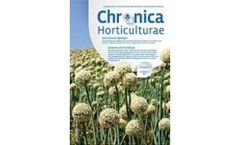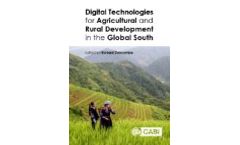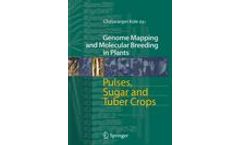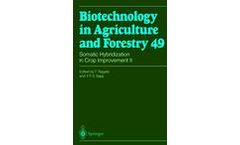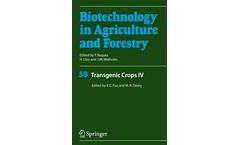Refine by
potato books
16 books found
Emphasizes three key areas of alfalfa management - establishment, production, and harvest - and contains new research and recommendations on: Roundup Ready alfalfa, potato leap hopper and PHL resistance, Aphanomyces race 2, value of short rotations, digestible fiber and RFQ, and minimizing wheel traffic ...
Petunia belongs to the family of the Solanaceae and is closely related to important crop species such as tomato, potato, eggplant, pepper and tobacco. With around 35 species described it is one of the smaller genera and among those there are two groups of species that make up the majority of them: the purple flowered P.integrifolia group and the white flowered P.axillaris group. ...
Many species are familiar agricultural pests. The Colorado potato beetle, the cereal beetle, flea beetle and the corn root worms ...
Tropical crops such as cowpea, yam, plantain, and cassava are heavily underresearched but, in addition to rice, maize, wheat, and potato, are important as primary or secondary food staples in the developing countries. ...
Thirty-five chapters on various aspects of fusion of plant protoplasts and somatic hybridization deal with the regeneration of interspecific and intergeneric somatic hybrids and cybrids in various plants: cereals, grasses, legumes, potato, tomato, eggplant, lettuce, Brassica, Datura, Hyoscyamus, Nicotiana, Catharanthus, Rauwolfia, Citrus, Poncirus, Prunus, Pyrus, Populus, algae, ...
This is a book for the general reader about the world of fungi. We should know more about fungi. They have killed us, saved us and served us since before written records began. We have been making bread, brewing ale, and fermenting wine for millennia. Our crops have been at the mercy of fungal diseases since we became farmers, and they still are. Fungal diseases have caused large demographic ...
This is a book for the general reader about the world of fungi. We should know more about fungi. They have killed us, saved us and served us since before written records began. We have been making bread, brewing ale, and fermenting wine for millennia. Our crops have been at the mercy of fungal diseases since we became farmers, and they still are. Fungal diseases have caused large demographic ...
The Turkish citrus industry, T. Yeşiloğlu, B. Yılmaz, M. İncesu and B. Çimen. Selection and dissemination of vegetable cultivars in the Sahel, D. Pasternak, S. Kumar and I. Housseini. New books, websites. Courses and ...
This book shares research and practice on current trends in digital technology for agricultural and rural development in the Global South. Growth of research in this field has been slower than the pace of change for practitioners, particularly in bringing socio-technical views of information technology and agricultural development perspectives together. The contents are therefore structured ...
Genome Mapping and Molecular Breeding in Plants presents the current status of the elucidation and improvement of plant genomes of economic interest. The focus is on genetic and physical mapping, positioning, cloning, monitoring of desirable genes by molecular breeding and the most recent advances in genomics. The series comprises seven volumes: Cereals and Millets; Oilseeds; Pulses, Sugar and ...
Somatic hybrids through the fusion of plant protoplasts have widened the genetic variability of cultivated plants. As "Somatic Hybridization in Crop Improvement I", published in 1994, this volume describes how this discipline can contribute to the improvement of crops. It comprises 24 chapters dealing with interspecific and intergeneric somatic hybridization and cybridization. It is divided into ...
Presenting the state of the art of tissue culture and in vitro propagation of vegetable and tuber crops, medicinal and aromatic plants, fibre and oilseed crops, and grasses, this book complements the previous two volumes on High-Tech and Micropropagation, which concentrated on special techniques (Vol.17) and trees and bushes of commercial value (Vol.18). The specific plants covered here include ...
Genetic engineering is a powerful tool for crop improvement. Crop biotechnology before 2001 was reviewed in Transgenic Crops I-III, but recent advances in plant cell and molecular biology have prompted the need for new volumes. Transgenic Crops IV deals with cereals, vegetables, root crops, herbs and spices. Section I is an introductory chapter on the impact of plant biotechnology in agriculture. ...




